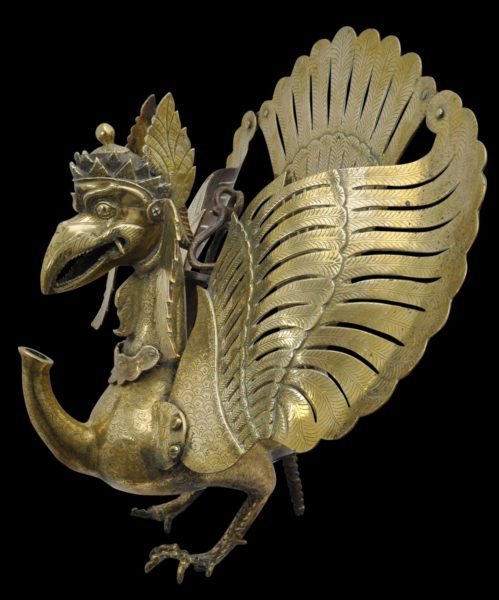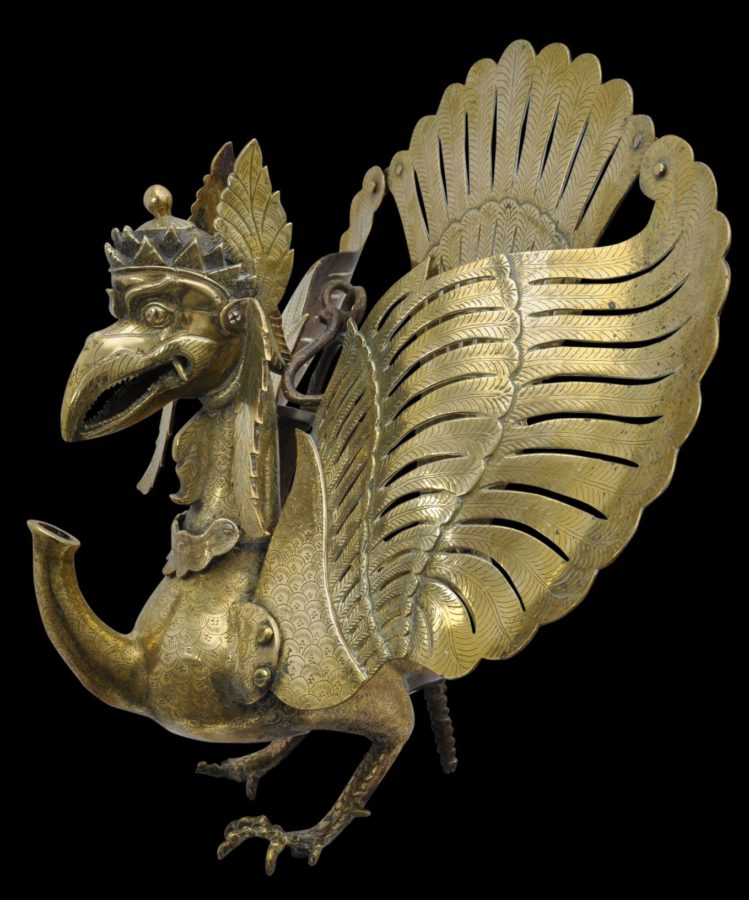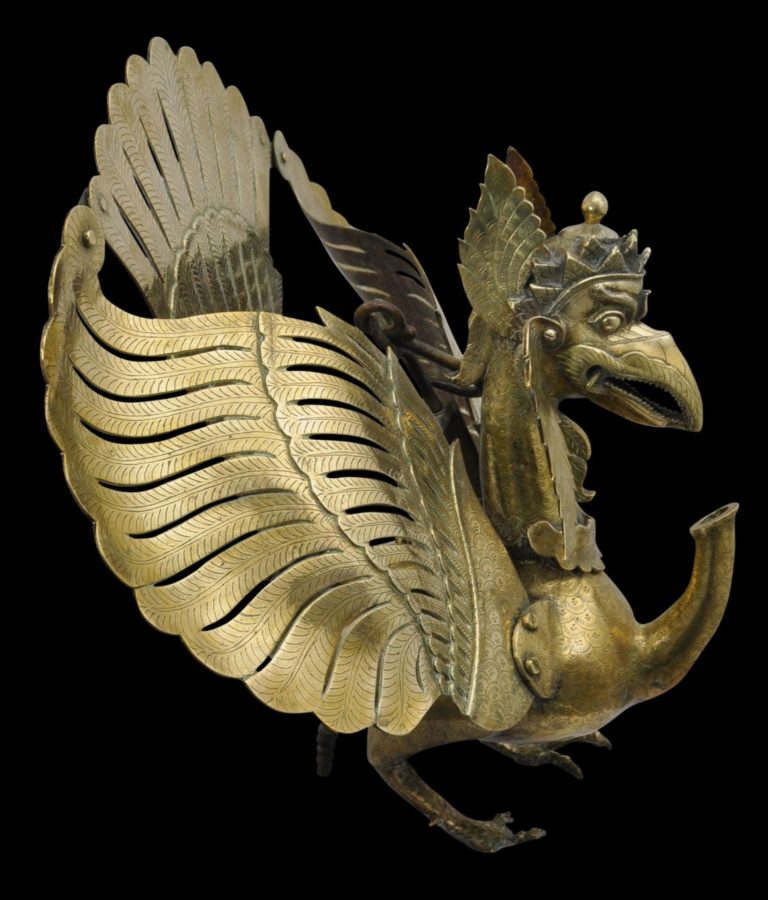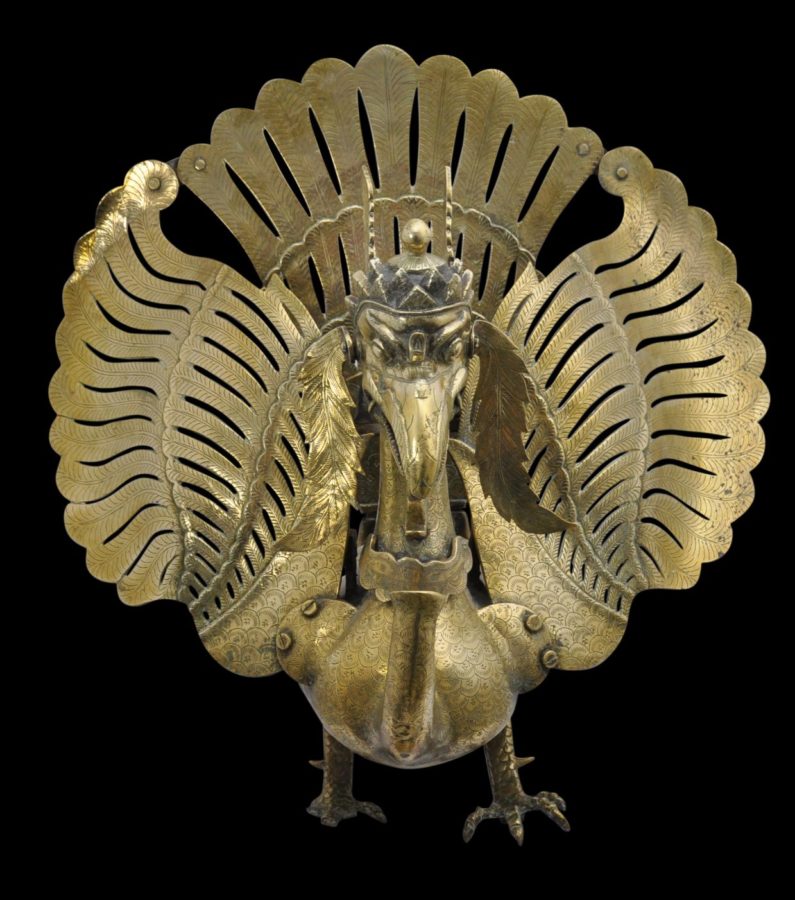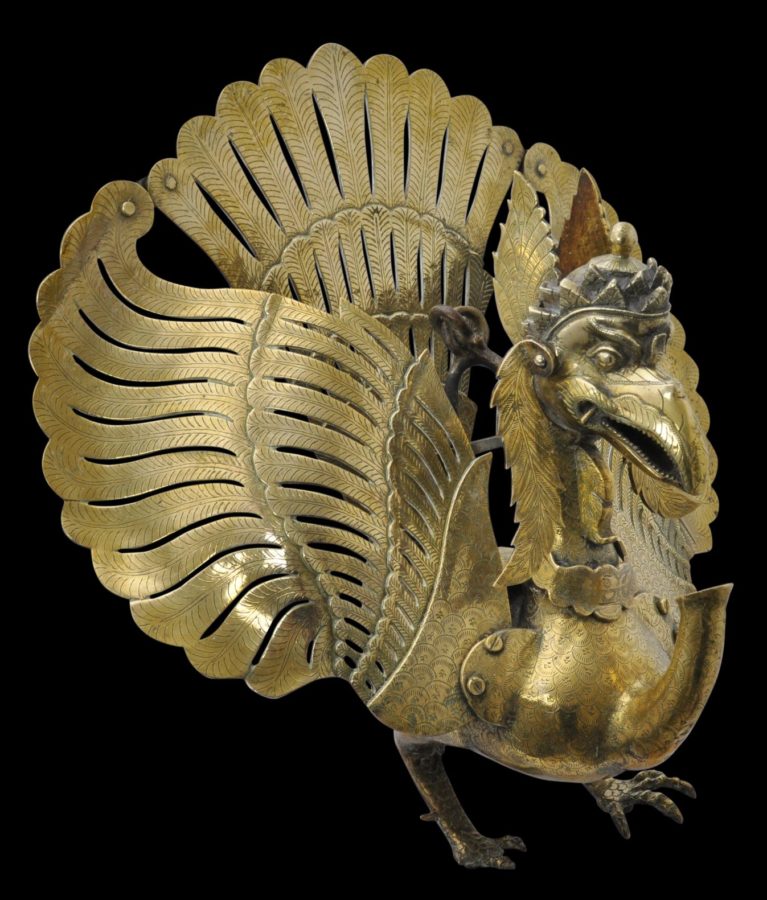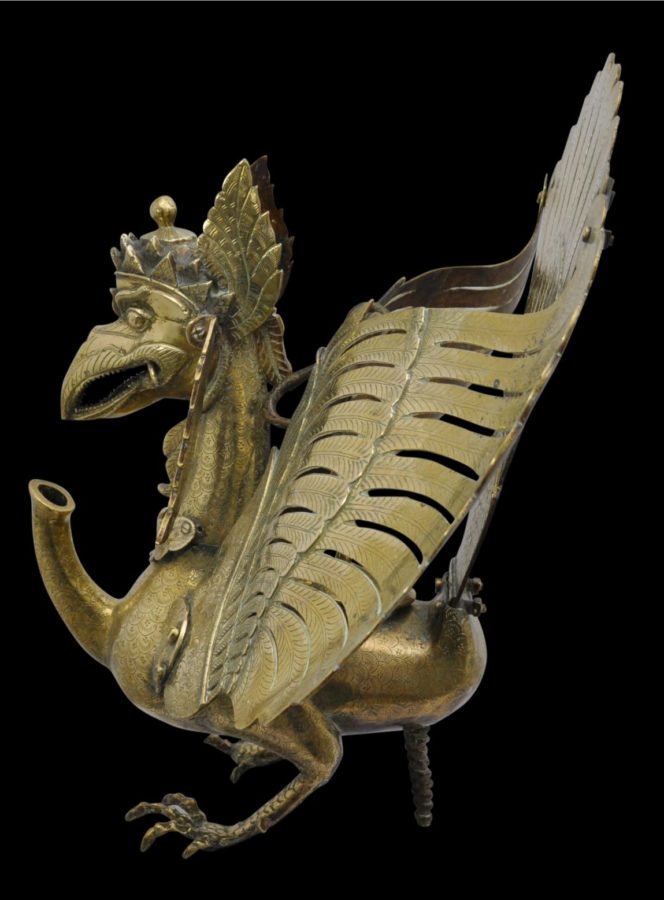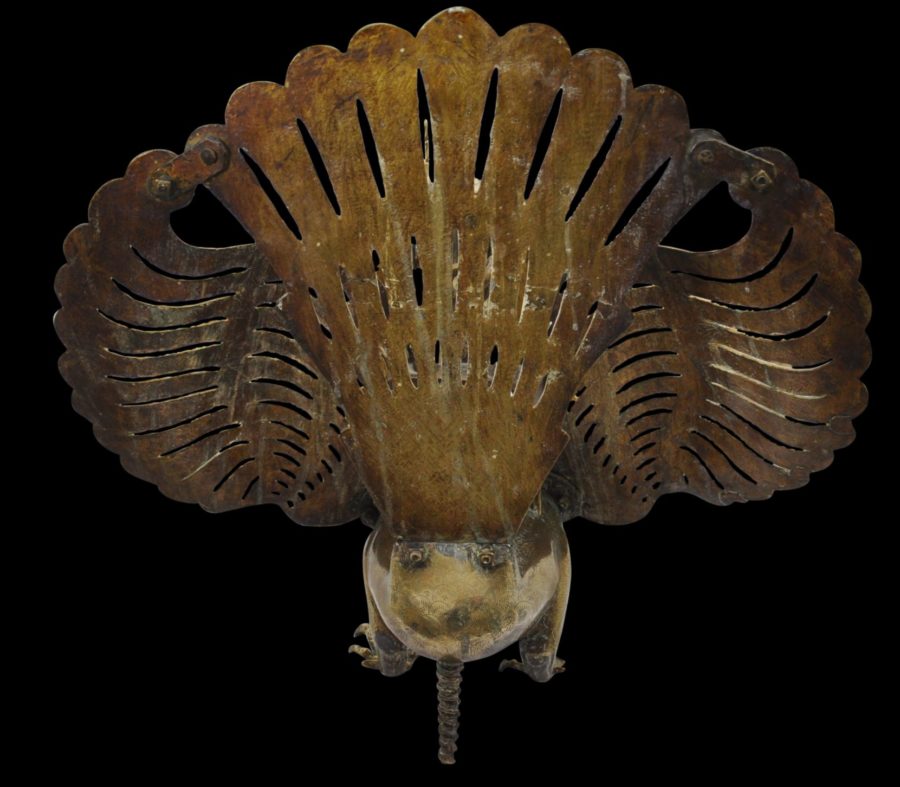This magnificent large, heavy cast, chiselled and engraved brass lamp is in the form of the mythical garuda bird. Lamps were an essential part of the wayang kulit or shadow puppet performance and were suspended over the puppeteer’s (dalang’s) head behind the screen (kelir) to light it up so that the shadows of the leather cut-out puppets would be projected onto the reverse of the screen – the side that faces the audience. The example here is better than is typical for a wayang lamp and indeed is more elaborate than most extant lamps cast in the form of a garuda.
The body serves as the well for oil – typically coconut oil – and a large spout emanates from the chest of the garuda from which a flame would be emitted which would light up the wayang screen. Importantly, the lamp retains the cover for the oil well, which sits over the back of the garuda’s body. Often these are lost.
Waves of feathers emanate from the wings and tail. The garuda also has a large, thick beak with serrated edging inside (almost like teeth!) and a winged crown.
A short heavy chain and hook is attached to the structure behind the head.
The wings and tail have been cast separately to the body and have been attached by means of hand-made screws and rivets.
The garuda rests on two claws (one is missing most of its toes – this seems to be old losses) and a curious brass peg at the rear which has been cast with a rudimentary screw-like thread. It is possible that this peg not only allows the garuda to stand unsupported but might also have allowed it to be supported on a brass stand behind the wayang screen as an alternative to the lamp being suspended overhead.
Dating such lamps is difficult. The form appears to have been used for several hundred years. However, later lamps tend to be cruder, with less refined detailing. Ibbitson Jessup (1990, p. 183) illustrates a wayang lamp and among those published, this is the most similar to ours in terms of its fineness, scale and complexity. The Ibbitson Jessup this example is dated 1776, suggesting that that our example similarly could be dated to as early as the 18th century. If this is so then it is possible that our lamp came to England during the early 19th century during the brief period of British rule over Java.
Later examples seem to be less fine and complex, particularly by the early 20th century.
Other examples are illustrated in Curvelo (2008, p. 119), and Meulenbeld, (1988, p. 199). Jasper & Pirngadie (1930, p. 114-115) illustrate two garuda lamps which probably date to the 19th or early 20th centuries. These are somewhat elaborate but still lack the refinement, complexity and good proportions of our example. A fine example is in the British Museum.
Veenendaal (2014, p. 17) illustrates an early 20th century brass wall lamp for the Dutch market that has been cast in the form of a garuda wayang theatre lamp.
Our example is in fine condition. There are old losses to one claw as mentioned. The brass has been polished over the years (it seems likely in Java that these lamps were kept polished rather than allowed to darken and oxidise) and there still are some remnants of polish in some of the crevices. Otherwise, the lamp is in very fine condition with excellent sculptural presence.
References
Curvelo, A., et al, The Orient Museum, Lisbon, Reunion des Musees Nationaux, 2008.
Ibbitson Jessup, H., Court Arts of Indonesia, The Asia Society Galleries/Harry N. Abrams, 1990.
Jasper, J.E. & Pirngadie, De Inlandsche Kunstnijverheid in Nederlandsch Indie V: de Bewerking van Niet-Edele Metalen, 1930 (reprinted 2009 by Sidestone Press, Leiden).
Meulenbeld, B.C., et al, Budaya Indonesia: Arts and Crafts in Indonesia, Tropenmuseum, 1988.
Veenendaal, J., Asian Art and the Dutch Taste, Waanders Uitgevers Zwolle, 2014.


